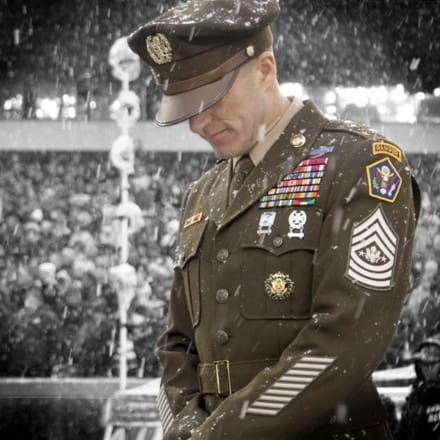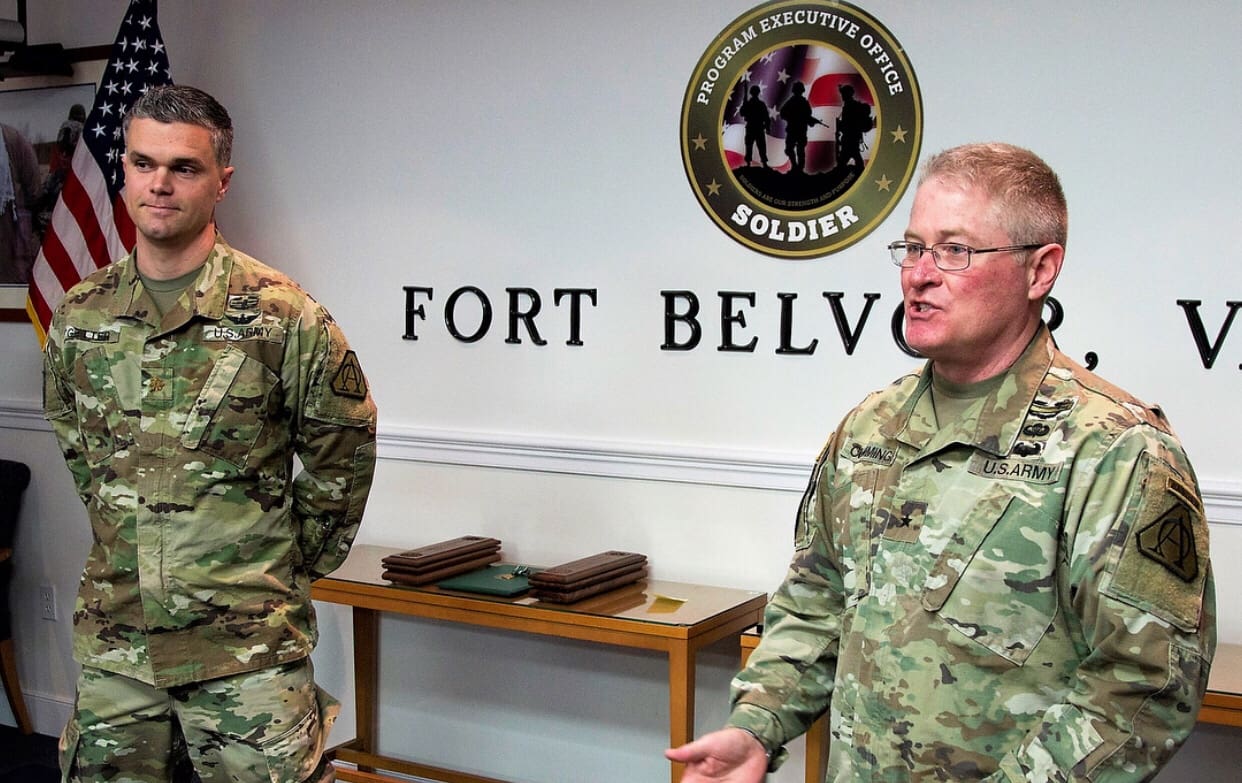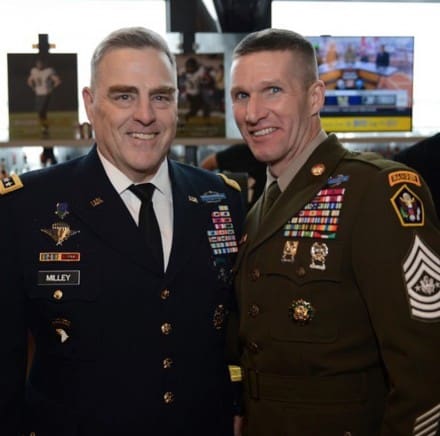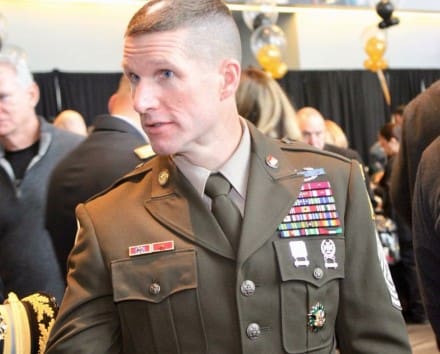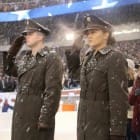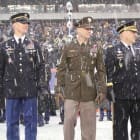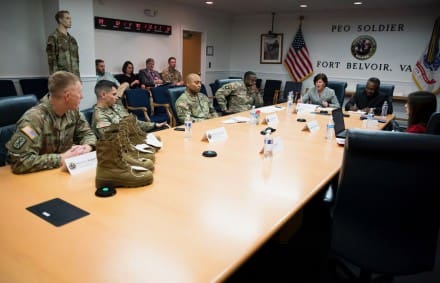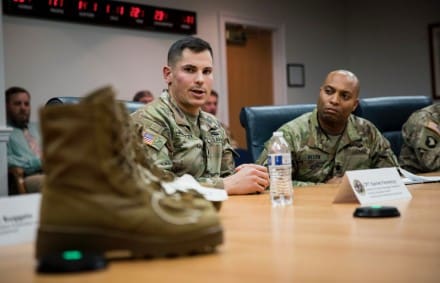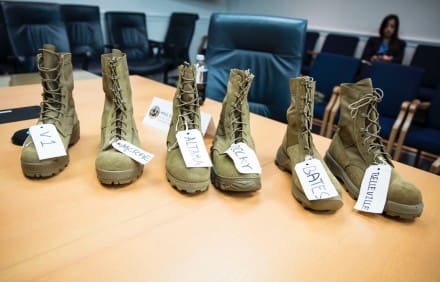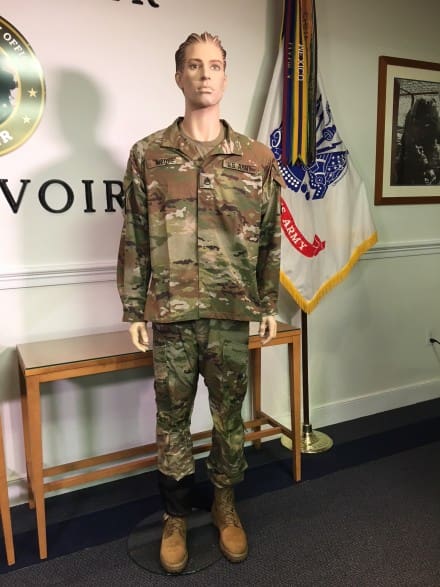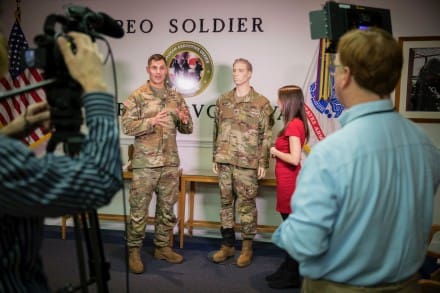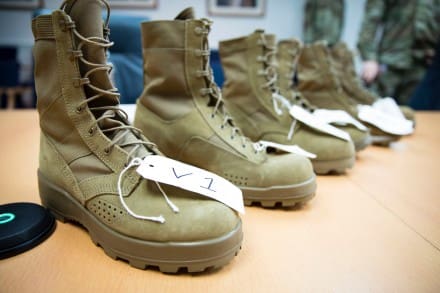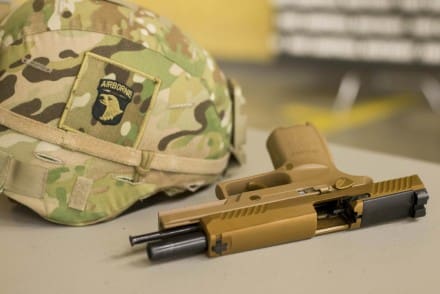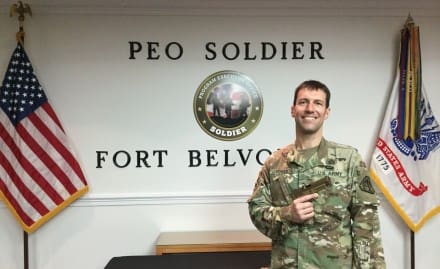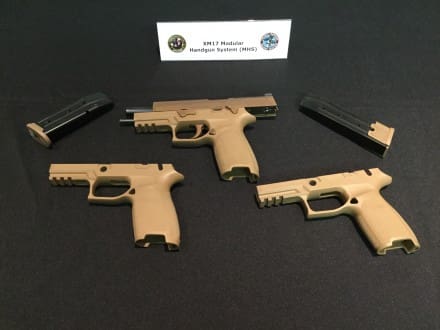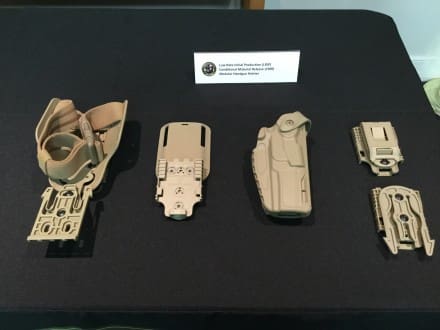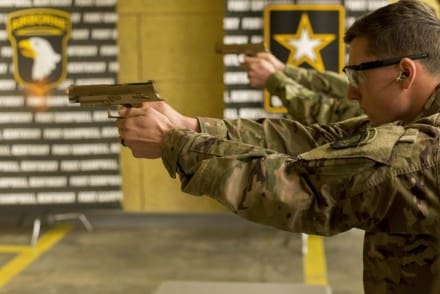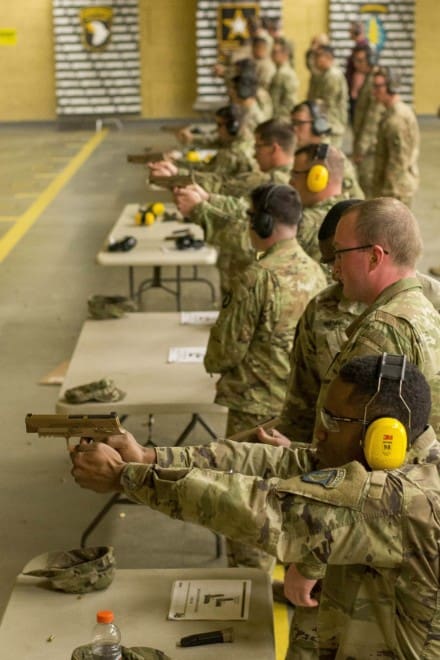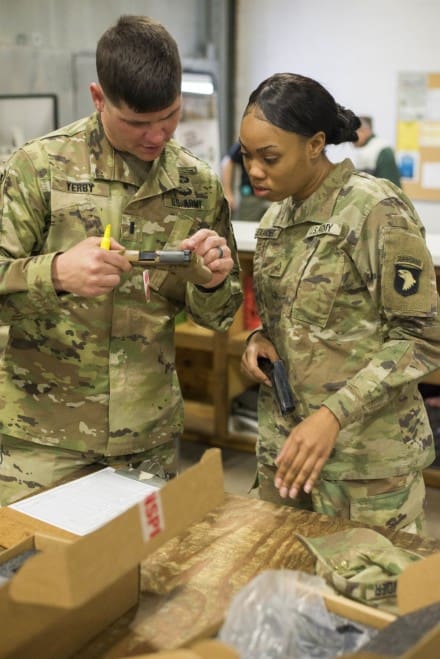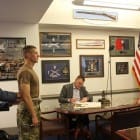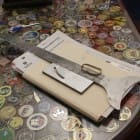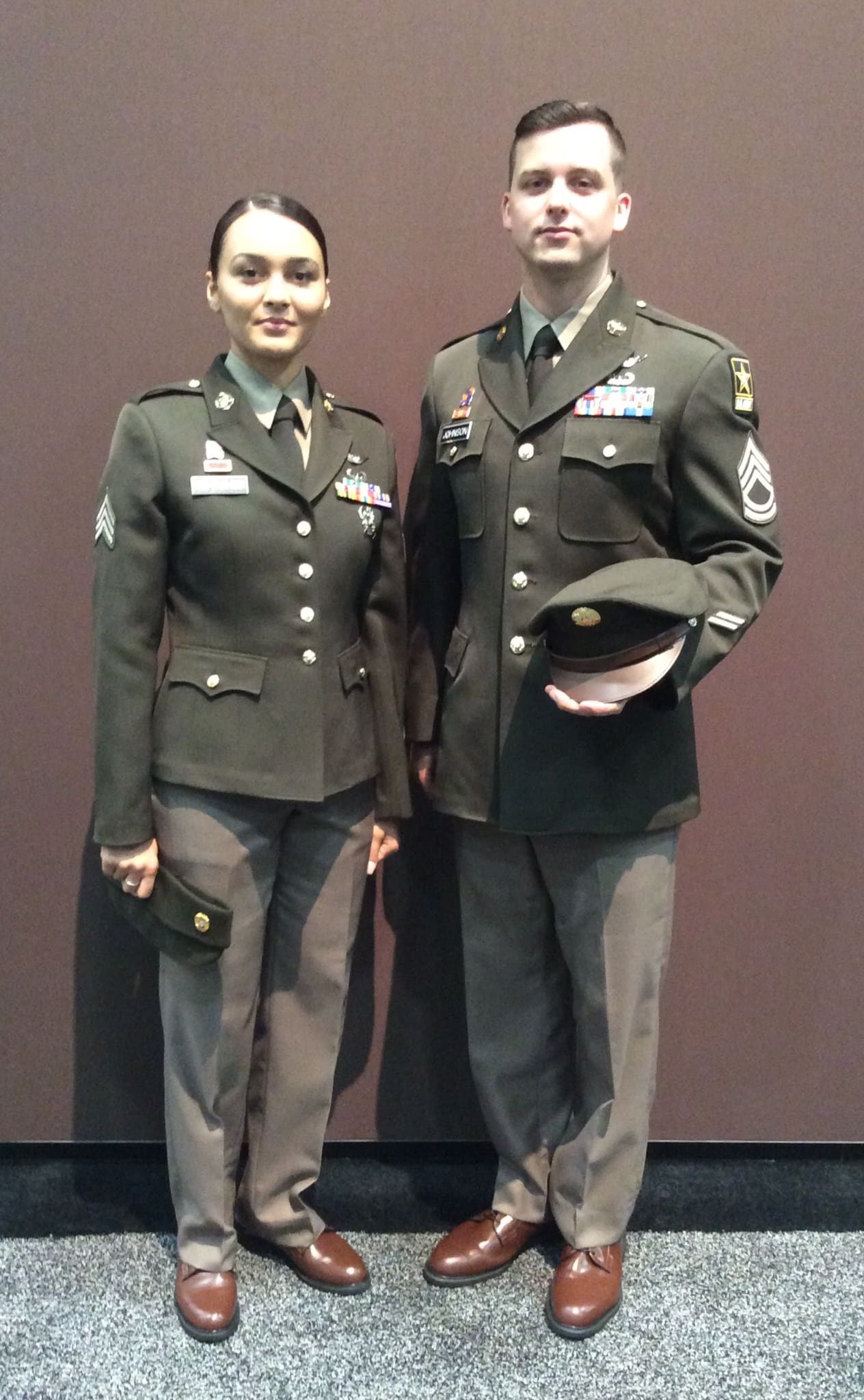FORT CARSON, Colo – Soldiers with the 71st Ordnance Group (Explosive Ordnance Disposal) and 10th Chemical Hazardous Response Company participated in the final round of field-testing for the Army’s new body armor, the Modular Scalable Vest (MSV), during a weeklong series of evaluated tasks conducted here Oct. 16-20.
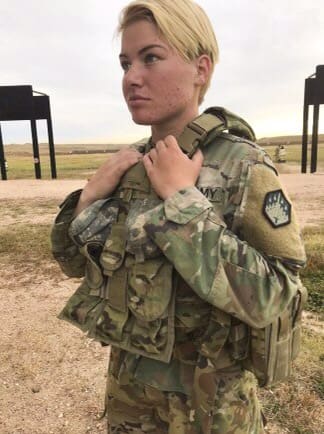
SPC Hannah Carver-Frey, a chemical, biological, radiological, nuclear specialist with 10th Chemical Hazardous Response Company, participates in the final round of field-testing for the Modular Scalable Vest (MSV) during a weeklong series of evaluated tasks at Fort Carson, CO, Oct. 18, 2017. Once this evaluation is complete, the vest will go into production and is expected to reach Soldiers in the field by summer of next year. (US Army Photo by SSG Lance Pounds, 71st Ordnance Group (EOD), Public Affairs)
According to the U.S. Army Acquisition Support Center’s website, the MSV is part of the Soldier Protection System (SPS) and is the Army’s next generation Personal Protective Equipment (PPE) system. The SPS is a modular, scalable, tailorable system designed to defeat current threats at a reduced weight in comparison to the Army’s existing PPE.

Damon Brant, a new equipment trainer from Project Manager Soldier Protection Individual Equipment at Prince George, VA, ensures the proper wear and use of a new body armor system by SPC Creed Cooney, an explosive ordnance disposal technician with 62nd Ordnance Company, during a weeklong field-test of the Modular Scalable Vest (MSV) at Fort Carson, CO, Oct. 18, 2017. Following the field-test, the vest will go into production and is expected to reach Soldiers in the field by summer of next year. (US Army photo by SSG Lance Pounds, 71st Ordnance Group (EOD), Public Affairs)
Stephen McNair, test manager for Project Manager Soldier Protection Individual Equipment (PM SPIE), a division of Program Executive Officer Soldier (PEO Soldier) at Fort Belvoir, was on-site to observe as Soldiers conducted an obstacle course, weapons training, don and doffing procedures, tactical vehicle access capabilities, and a ruck march.

Soldiers with in the 71st Ordnance Group (Explosive Ordnance Disposal) and 10th Chemical Hazardous Response Company participate in the final round of field-testing for the Modular Scalable Vest (MSV) during a weeklong series of evaluated tasks at Fort Carson, CO, Oct. 18, 2017. Once this evaluation is complete, the vest will go into production and is expected to reach Soldiers in the field by summer of next year. (US Army photo by SSG Lance Pounds, 71st Ordnance Group (EOD), Public Affairs)
“We have been working on this vest for the past five years and have since have gone through four versions of the vest and an additional two versions of the Soldier plate carrier system,” said McNair.
McNair said once the evaluation is complete, the vest will go into production and is expected to reach Soldiers in the field by summer of next year.
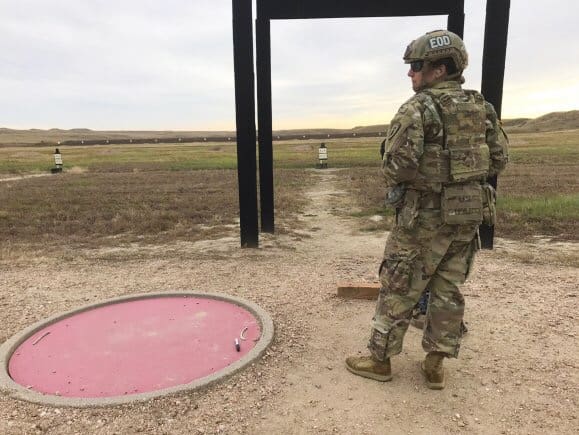
1LT Dawn Ward, a platoon leader with 663rd Ordnance Company and evaluation officer in charge, participates in the final round of field-testing for the Modular Scalable Vest (MSV) during a weeklong series of evaluated tasks at Fort Carson, CO, Oct. 18, 2017. Once this evaluation is complete, the vest will go into production and is expected to reach Soldiers in the field by summer of next year. (US Army photo by SSG Lance Pounds, 71st Ordnance Group (EOD), Public Affairs)
Debuting in 2008, the Improved Outer Tactical Vest’s modular design was carried over and improved upon for the MSV. Most of the pouch attachment ladder system (PALS) have been replaced with a rubber-like material with laser-cut slots. The improvement still allows Soldiers to affix mission essential gear to the vest, while reducing overall weight.
The MSV weighs approximately 11-pounds, based on a medium size vest without ballistic plates. Fully configured, the MSV weighs approximately 25-pounds, which is five pounds lighter than the IOTV.

Michael Spencer, a new equipment trainer from Project Manager Soldier Protection Individual Equipment at Fort Bragg, NC, demonstrates how the Modular Scalable Vest (MSV) can be separated into different configurations, during the final round of field-testing of the vest at Fort Carson, CO, Oct. 18, 2017. Once this evaluation is complete, the vest will go into production and is expected to reach Soldiers in the field by summer of next year. (US Army photo by SSG. Lance Pounds, 71st Ordnance Group (EOD), Public Affairs)
McNair said the big push to design a new body armor was based on “cutting down on the weight of a Soldier’s load.”
Many of the testers said the MSV was noticeably lighter than their current body armor.
“Compared to my IOTV, this vest is lighter and cooler, has a greater range of motion, and a better fit,” said 1st Lt. Dawn Ward, a platoon leader with 663rd Ordnance Company and officer in charge during the evaluation.
“It is a huge improvement over previous body armors,” Ward said.
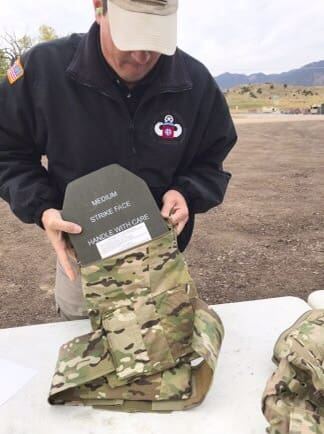
Michael Spencer, a new equipment trainer from Project Manager Soldier Protection Individual Equipment at Fort Bragg, NC, demonstrates how to transfer ballistic plates from the Modular Scalable Vest (MSV) to a plate carrier configuration enclosed within the MSV, during the final round of field-testing of the vest at Fort Carson, CO, Oct. 18, 2017. Once this evaluation is complete, the vest will go into production and is expected to reach Soldiers in the field by summer of next year. (US Army photo by SSG Lance Pounds, 71st Ordnance Group (EOD), Public Affairs)
In addition to saving weight, the MSV is scalable, which was made possible by a four-tier configuration. The tier system will allow the wearer to tailor the vest to better fit mission requirements.
The first tier enables the wearer to pull out the inside soft armor to be used as concealable body armor. The second tier is the soft armor with plates. The third tier is the vest with ballistic plates and soft armor.
The final tier is the addition of a ballistic combat shirt that has built -in neck, shoulder and pelvic protection and a belt system designed to relocate much of what Soldiers affix to their vest to their hips.

(Graphic credit: PEO Soldier)
Spc. Isaac Bocanegra, an EOD technician with 764th OD CO, said he prefers the MSV’s ballistic combat shirt over the IOTV’s yoke and collar set up because it gives him more range of motion.
“I currently wear the IOTV about twice each day and it is quite a bit heavier than this body armor,” said Bocanegra. “Having this new body armor would make my job so much easier,” he added.
McNair said the premise of the tier system is to evenly distribute the system’s weight and reduces stress on a Soldier’s upper body.
“It will be up to unit leadership to determine the level of protection required for wear,” said McNair.
The MSV retained the quick-release feature first used in the IOTV to allow for easy removal in emergency situations, but with a simpler and interchangeable design. Instead of a single pull-tab, the MSV has a buckle system that can be used in one of three ways; left shoulder, right shoulder, or both depending on the wearer’s preference.
Extended sizing options allow the MSV to be tailorable and more accommodating to most Soldier body types.
“The extended range allows Soldiers to be more comfortable while performing tasks with greater ease,” said McNair.
“I have an extra-small because it positions the plates where I need them to be and it has a tighter fit for me,” said Spc. Hannah Carver-Frey, a chemical, biological, radiological, nuclear specialist with 10th Chemical Hazardous Response Company.
In addition to developing the lighter weight body armor, McNair said that developers at PEO Soldier are also working on an improved protective helmet system. It too, will be lighter than current protective helmets and capable of stopping certain 7.62 rounds.
For more information about the MSV body armor, visit the U.S. Army Acquisition Support Center’s website at asc.army.mil/web/portfolio-item/soldier-protection-system-sps
For more information about the future of Soldier protective equipment, visit the PEO Soldier’s website at www.peosoldier.army.mil.
This article was written by SSG Lance Pounds and shared via the Army News Service.
